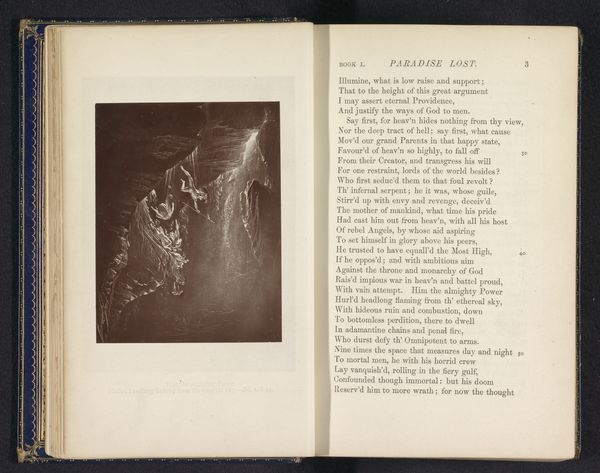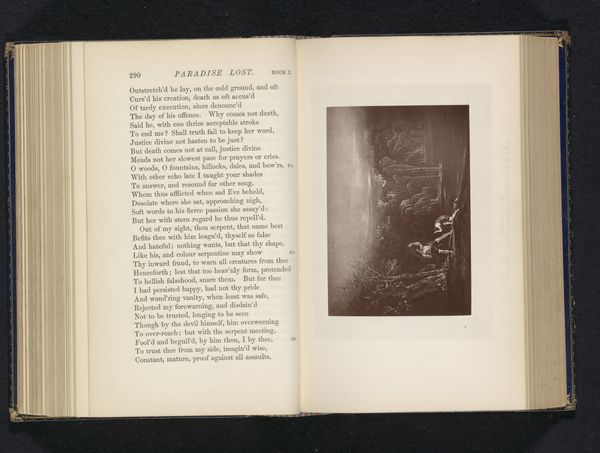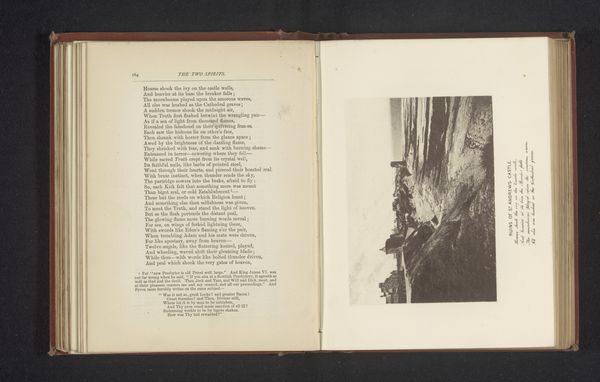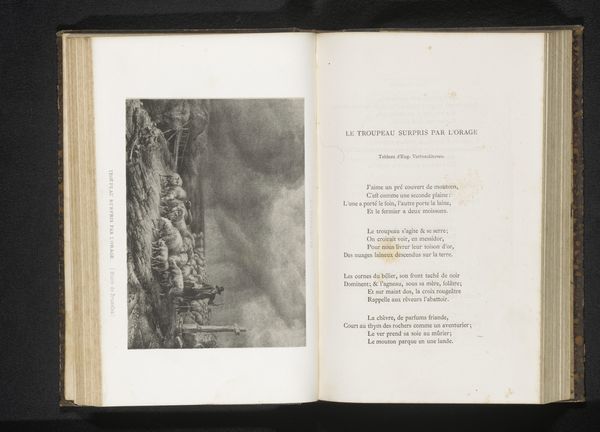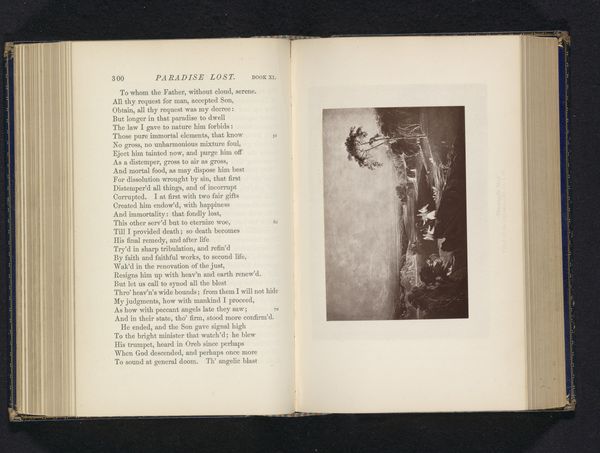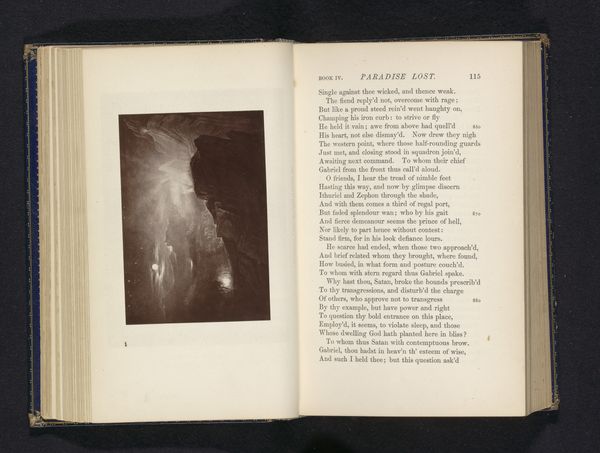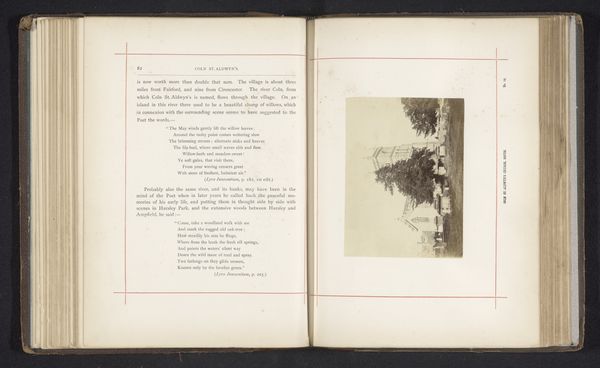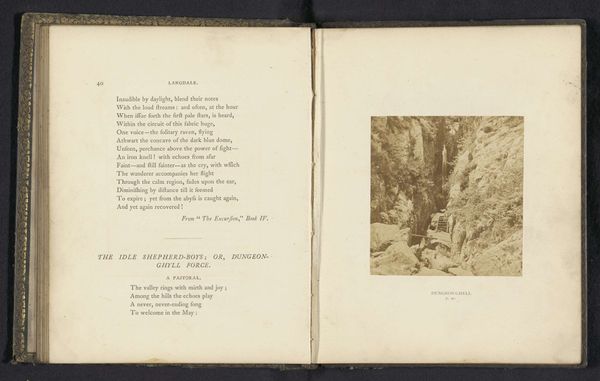
Fotoreproductie van een prent, voorstellende Adam en Eva in het Paradijs before 1876
0:00
0:00
Dimensions: height 82 mm, width 118 mm
Copyright: Rijks Museum: Open Domain
Curator: Here we have "Fotoreproductie van een prent, voorstellende Adam en Eva in het Paradijs," a photo reproduction of a print depicting Adam and Eve in Paradise. It's believed to be from before 1876. Editor: It’s surprisingly dramatic, isn’t it? All that looming darkness and what looks like an almost explosive light. Makes the paradise seem less, well, paradisiacal. It's unsettling. Curator: The visual symbolism of light and dark here plays a vital role. Consider the traditional iconography of the Fall. The dark could represent ignorance or sin encroaching on the original, illuminated purity of Eden. It is, in fact, from Paradise Lost, the expulsion of Adam and Eve. Editor: Absolutely, and I think about how these prints would have been reproduced and consumed. Photography making art more accessible—potentially widening access to religious narratives but also changing how people engage with them. Think of the labour involved; from the photographer to the engraver of the original, not to mention the printing process. It adds layers to the narrative, shifting focus to social aspects of religious culture. Curator: It’s interesting how that reproducibility impacts our understanding of the Fall itself. Original sin now available in multiple originals. That act echoes the psychological fracture caused by disobeying God – a splintering of the self. The print acts like a visual shorthand for this ancient trauma. Editor: A trauma mass-produced. Fascinating tension! But the very act of reproducing also transforms the narrative. Does something get lost, something added? Is it the process of copying this engraving from the past in order to create a photograph of the original, is that now an interpretation of paradise itself? Curator: I suppose every retelling inevitably reflects the values and concerns of its own time. And like Eden, perhaps an artwork also has an innocent origin which becomes complex over time through viewing and making! Editor: It seems the production and re-production add a significant material and social element, impacting how this old narrative persists to shape ideas today. It's an important part of understanding both art and ourselves!
Comments
No comments
Be the first to comment and join the conversation on the ultimate creative platform.
